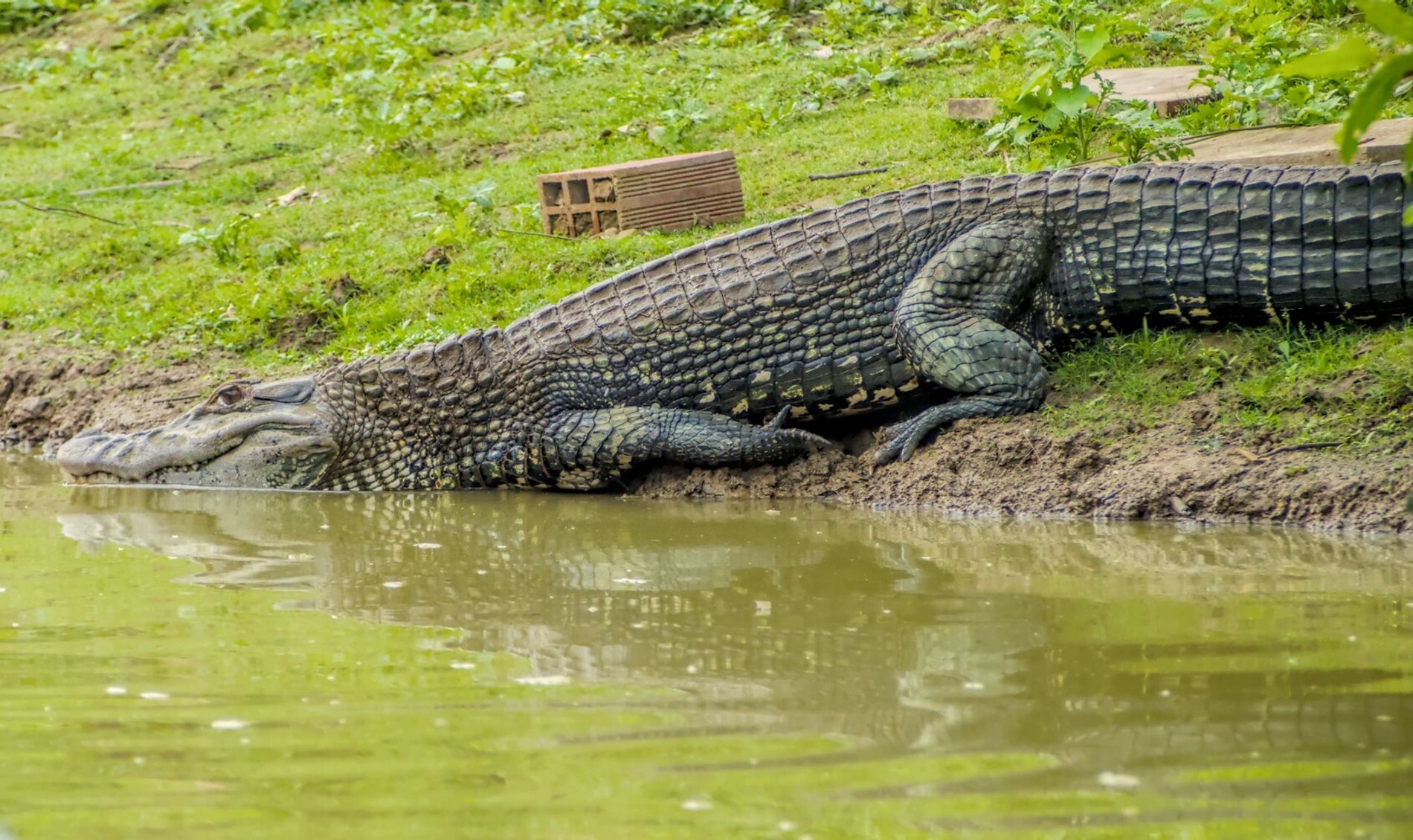It is very likely that a prey of the **black caiman** (Melanosuchus niger) does not realize how close it is until it is too late. This is because the **largest caiman in South America** is an expert at blending into its natural habitat: the flooded areas of the [Amazon and Tocantins-Araguaia river basins](https://noticiasambientales.com/medio-ambiente/el-punto-de-partida-del-rio-amazonas-donde-se-encuentra/), in the northern part of the South American territory.
This is explained in a scientific document about this animal published by the **Chico Mendes Institute for Biodiversity Conservation (ICMBio)**, an organism dedicated to the protection, inspection, and surveillance linked to the Brazilian Ministry of Environment. “More than 70% of the **distribution area of the black caiman** is located in Brazil, while the rest extends to Bolivia, Colombia, Ecuador, French Guiana, Guyana, and Peru,” the source states.
Habitat and characteristics of the black caiman
Also known as the black yacare, this reptile [inhabits the Amazonian wetlands](https://noticiasambientales.com/medio-ambiente/sudamerica-envuelta-en-llamas-los-incendios-arrasan-el-amazonas-con-mas-de-400-mil-focos/), including large rivers and their lagoons, floodplains, igapó forests, as well as seasonal flooded savannas, according to the governmental article.
It is a **fierce and opportunistic hunter** and can feed on other caimans, mammals like jaguars, and huge snakes like the anaconda.

Essential data about this reptile
- Characteristics of the black caiman: Considered the largest caiman in South America (and one of the largest in the world), this **colossal reptile** can exceed 4 meters in length and weigh 400 kilograms. There are reports of individuals that have exceeded 5 meters. Its dark, almost black coloration, facilitates its camouflage in the murky waters of the Amazon, especially at night.
- Diet of the black caiman: Melanosuchus niger is an opportunistic predator, eating anything that moves and can be swallowed, including other caimans. It can feed on birds, mammals (even jaguars), and huge snakes, such as the anaconda. Unlike other caiman species, the black caiman is more solitary and territorial.
- Ecological impact: The black caiman is at the **top of the food chain**, controlling populations of various species. Although an adult has no natural predators, young caimans become food for other species and for adult caimans.
- Aggressiveness and precautions: This reptile is territorial and can be more reactive than other caimans, which is why attacks on people have been recorded. Riparian communities are at greater risk due to their proximity to water.
- Threats to the black caiman: The population of black caimans is decreasing due to **habitat loss and illegal hunting**. Additionally, anthropogenic actions such as dam construction, deforestation, mining, and hunting for international trade affect this species. However, the IUCN considers the black caiman to be currently at **low risk of extinction**.
Do you already know our YouTube channel? Subscribe!

